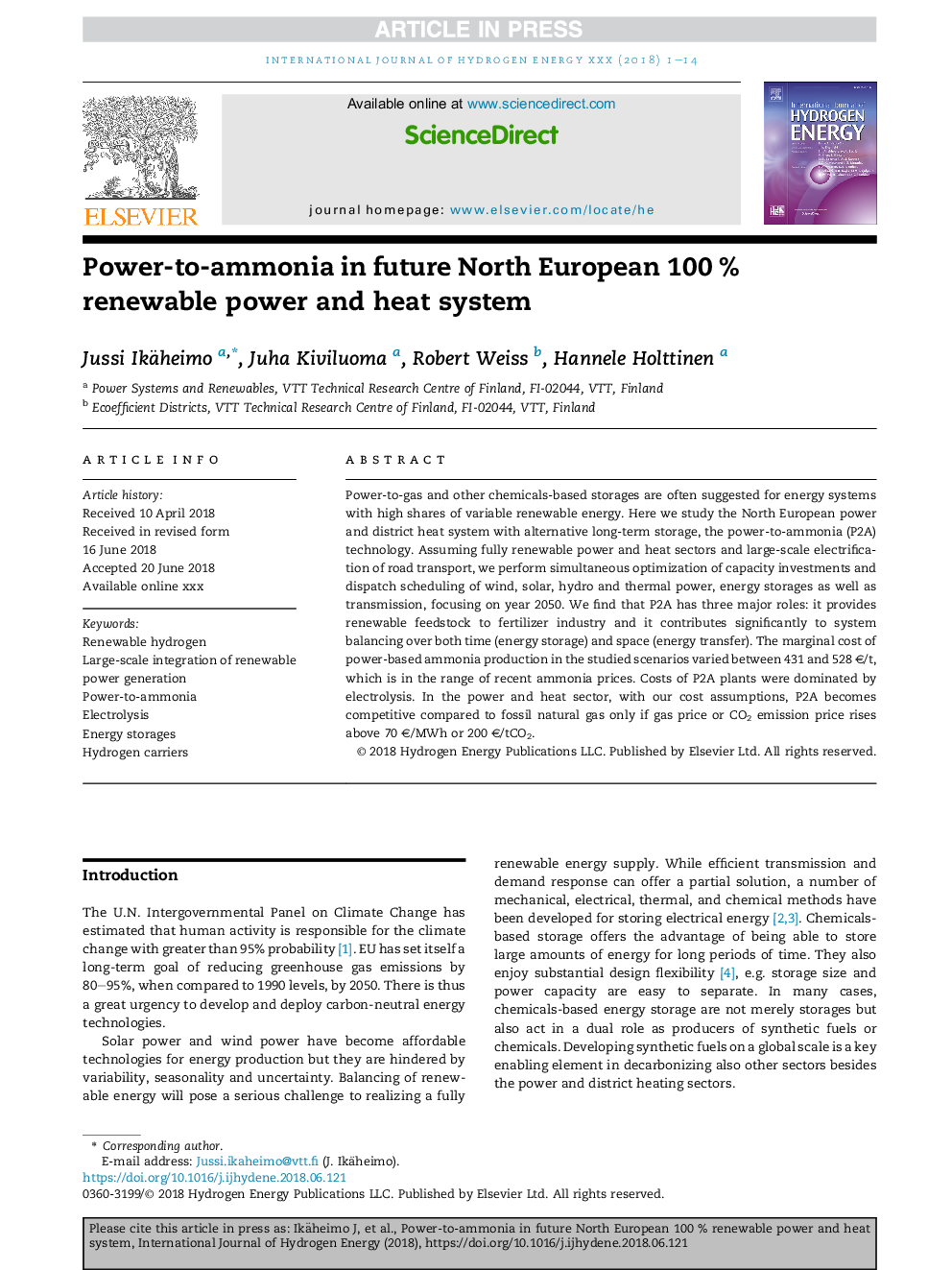| Article ID | Journal | Published Year | Pages | File Type |
|---|---|---|---|---|
| 8948270 | International Journal of Hydrogen Energy | 2018 | 14 Pages |
Abstract
Power-to-gas and other chemicals-based storages are often suggested for energy systems with high shares of variable renewable energy. Here we study the North European power and district heat system with alternative long-term storage, the power-to-ammonia (P2A) technology. Assuming fully renewable power and heat sectors and large-scale electrification of road transport, we perform simultaneous optimization of capacity investments and dispatch scheduling of wind, solar, hydro and thermal power, energy storages as well as transmission, focusing on year 2050. We find that P2A has three major roles: it provides renewable feedstock to fertilizer industry and it contributes significantly to system balancing over both time (energy storage) and space (energy transfer). The marginal cost of power-based ammonia production in the studied scenarios varied between 431 and 528 â¬/t, which is in the range of recent ammonia prices. Costs of P2A plants were dominated by electrolysis. In the power and heat sector, with our cost assumptions, P2A becomes competitive compared to fossil natural gas only if gas price or CO2 emission price rises above 70 â¬/MWh or 200 â¬/tCO2.
Keywords
Related Topics
Physical Sciences and Engineering
Chemistry
Electrochemistry
Authors
Jussi Ikäheimo, Juha Kiviluoma, Robert Weiss, Hannele Holttinen,
